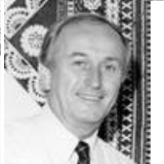Kiribati
This central Pacific island nation provides an interesting trivia item for geography buffs who actually know how to pronounce its name correctly (the “ti” makes the “s” sound). Kiribati covers such a vast area of the Pacific Ocean that it includes three separate Exclusive Economic Zones, the 200-mile limit for fishing and mining. Its easternmost island is as far from its westernmost island as New York is from California. A former British colony, upon independence Kiribati was given previously uninhabited islands claimed by the United States and the United Kingdom, and thus its huge expanse of ocean. One of the islands is Christmas (Kiritiimati: Ki-ris-i-mas), the world’s largest coral island. Kiribati has managed to exploit the resources of its vast ocean area and islands, but, as in all atoll nations, rising sea levels from global warming are a real threat.
 Paupe, William
Paupe, William
- Table of Contents
- News
- Overview
- Basic Information
- History
- Newspapers
- History of U.S. Relations with Kiribati
- Current U.S. Relations with Kiribati
- Where Does the Money Flow
- Controversies
- Human Rights
- Debate
- Past Ambassadors
- Ambassador to the U.S.
- Embassy Web Site in the U.S.
- Comments
- Leave a comment
U.S. Ambassador to Kiribati

Career diplomat Frankie Annette Reed has been chosen to serve as ambassador to the Pacific island nations of Fiji, Tonga, Kiribati, Tuvalu and Nauru. Her Senate confirmation hearing was held on June 29, 2011, and she was confirmed on August 3.
Previous U.S. Ambassador to Kiribati

C. Steven McGann, a longtime member of the Foreign Service whose work has spanned from Africa to South Asia, received his first ambassadorship in being selected to be the United States’ top envoy to Fiji, Tuvalu, Kiribati, Tonga, and Nauru. He assumed his position on October 8, 2008.
This central Pacific island nation provides an interesting trivia item for geography buffs who actually know how to pronounce its name correctly (the “ti” makes the “s” sound). Kiribati covers such a vast area of the Pacific Ocean that it includes three separate Exclusive Economic Zones, the 200-mile limit for fishing and mining. Its easternmost island is as far from its westernmost island as New York is from California. A former British colony, upon independence Kiribati was given previously uninhabited islands claimed by the United States and the United Kingdom, and thus its huge expanse of ocean. One of the islands is Christmas (Kiritiimati: Ki-ris-i-mas), the world’s largest coral island. Kiribati has managed to exploit the resources of its vast ocean area and islands, but, as in all atoll nations, rising sea levels from global warming are a real threat.
 Paupe, William
Paupe, William
Comments
U.S. Ambassador to Kiribati

Career diplomat Frankie Annette Reed has been chosen to serve as ambassador to the Pacific island nations of Fiji, Tonga, Kiribati, Tuvalu and Nauru. Her Senate confirmation hearing was held on June 29, 2011, and she was confirmed on August 3.
Previous U.S. Ambassador to Kiribati

C. Steven McGann, a longtime member of the Foreign Service whose work has spanned from Africa to South Asia, received his first ambassadorship in being selected to be the United States’ top envoy to Fiji, Tuvalu, Kiribati, Tonga, and Nauru. He assumed his position on October 8, 2008.







Comments